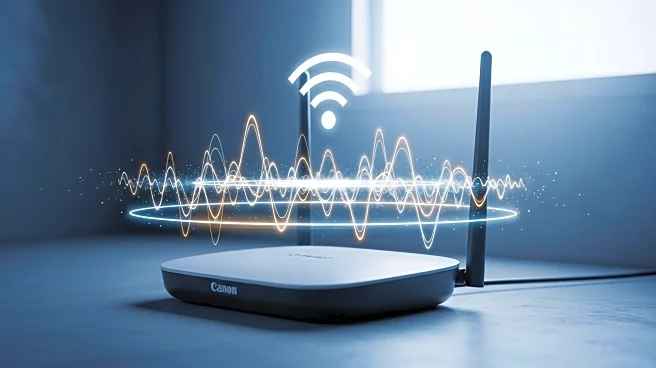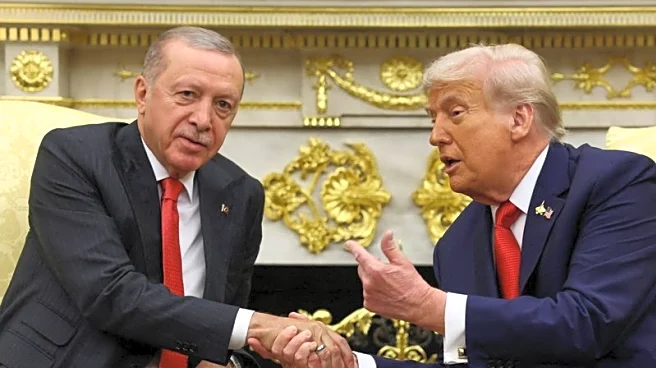What is the story about?
What's Happening?
At the SCTE TechExpo25 in Washington, D.C., a senior White House official emphasized the Trump Administration's 2020 decision to open the full 6 GHz band to Wi-Fi as a strategic move for U.S. global technology leadership. This decision has catalyzed innovation in Wi-Fi connectivity, benefiting consumers and positioning the U.S. as a leader in broadband services. Broadcom and Charter demonstrated advancements in Wi-Fi technology, achieving peak throughput of approximately 9 Gbps using the 6 GHz band. They are advocating for additional spectrum in the lower 7 GHz band to further enhance Wi-Fi capabilities. The National Economic Council Deputy Director, Robin Colwell, highlighted the success of the U.S. unlicensed spectrum strategy, noting its impact on global Wi-Fi infrastructure.
Why It's Important?
The expansion of the 6 GHz band for Wi-Fi is crucial for maintaining U.S. leadership in communications technology. It supports the development of next-generation Wi-Fi, which is essential for meeting increasing consumer demands for faster and more reliable internet connectivity. The move aligns with the administration's goals to ensure the U.S. remains at the forefront of technological innovation, particularly in Wi-Fi, 5G, and 6G networks. This strategy not only benefits consumers but also strengthens the U.S. position in the global tech landscape, encouraging other countries to follow suit.
What's Next?
Broadcom and Charter are lobbying for the federal government to open additional frequencies in the lower 7 GHz band for unlicensed use, which could enable Wi-Fi speeds of up to 20 Gbps. This expansion is seen as necessary to keep pace with evolving consumer demands and maintain U.S. technological leadership. The White House is actively engaged in discussions to support this initiative, with Presidential advisor Robin Colwell indicating ongoing conversations across the administration to ensure proactive spectrum decisions.
Beyond the Headlines
The decision to expand the 6 GHz band reflects broader policy goals of the Trump Administration to enhance U.S. technological capabilities and infrastructure. It underscores the importance of regulatory certainty in driving innovation and highlights the role of government policy in shaping the future of communications technology. The success of the U.S. strategy may influence global standards and practices in spectrum allocation, potentially leading to a more interconnected and technologically advanced world.
AI Generated Content
Do you find this article useful?















